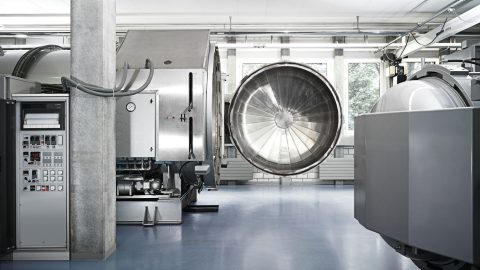We've heard it many times before: Automation is part of the future of additive manufacturing. In the metal sector, too, manufacturers of AM hardware offer equipment and systems that are designed for automated production - in some cases there are even concepts for entire factory floors. So from a marketing point of view, many things are possible - but what does reality look like on the production floors? We have investigated this question and asked leading manufacturers and service providers.
Whether it is worthwhile to start automating depends fundamentally on what is meant by automation in the first place (see article below), as well as on numerous factors such as the capacities of the company, the required standards and the complexity, size and number of components. Another crucial point is the company's business concept. "Our speciality is the qualification of new industrial applications from special and new materials. And we have already qualified more than 40 materials ourselves," says Philipp Schwarz, Business Development Manager at Rosswag. "We don't have automatic depowdering equipment, but we try to automate the small, time-consuming steps because we change the material very often."
Rosswag's AM division, Rosswag Engineering, was launched in 2014 as part of a traditional forging company (founded in 1911). The AM machinery currently includes three SLM 280s from SLM Solutions, an AL3D from Alpha Laser and a low-volume gas atomiser from BluePower, plus several CNC machines and a fully equipped materials lab. When asked what exactly the "small, time-consuming steps" are, Schwarz replies that they include powder transport, quality assurance in series production and data preparation.
Formula 1 and other industries
The level of automation in additive manufacturing is much higher at Sauber Technologies (Hinwil, Switzerland), a medium-sized service provider that produces components for the Alfa Romeo F1 Team Orlen as well as for other customers from different industries. In the course of partnering with Additive Industries, a machine manufacturer that has focused on automated systems such as the latest MetalFABG2 in recent years, Sauber Technologies went "all in" on automation.
The trigger for this development, however, was more pragmatic. "Productivity and efficiency are a must in order to reduce the cost per part and ensure repeatable quality at an absolute top level," explains Christoph Hansen, COO. "So we were always looking for the highest level of automation available on the market."
Sauber Technologies operates more than 20 machines and offers a wide range of additive manufacturing services. Processes and even laser parameters are tailored to the highest requirements. The combination of this approach and its infrastructure of hot isostatic presses (HIP), a team of AM design experts and the latest post-processing infrastructure make Sauber a "power user of additive manufacturing", according to the company. The production machines run autonomously with automatic order processing: the build plates are placed and removed by a robot and the next order starts automatically. The machines themselves remove the powder and recycle it under inert gas and without manual labour. Even heat treatments are carried out fully automatically in the plant. Several independent build chambers and a movable optical unit equipped with four lasers enable 24/7 operation. This enables Sauber to produce series parts in annual quantities of 10,000 and more.
Hansen's answer to the industrial demand for additive series production is that Sauber Technologies strategically focuses on classic industries, such as the packaging industry and other mechanical engineering companies. This makes sense, he says, especially when it comes to smaller, less complex components. "However, the situation is different when it comes to larger components from more demanding industries."
Manufacturing companies with a large and diverse machine park, such as Beamit, which produces with about 60 machines in seven plants in Italy and the UK, can cater for different needs. The real challenge in automation is "large, complex parts," says Andrea Scanavini, general manager at Beamit. "When it comes to extremely demanding applications, sometimes very large, where the printing phase is only a small part of the whole process, automation at its current stage of development is just not there yet."
The situation is particularly tricky in aerospace - the market that was one of the first to discover metal 3D printing and one of the most important for a large AM service provider like Beamit: this is where the really complex projects come into play, with large parts that can take a long time to print and, above all, have incredibly strict quality standards. The standards are indeed a big hurdle: Only a few large service providers today have the Nadcap certification required to manufacture aerospace parts.
www.formnext.com

 Deutsch (Germany)
Deutsch (Germany)  Polski (PL)
Polski (PL) 










